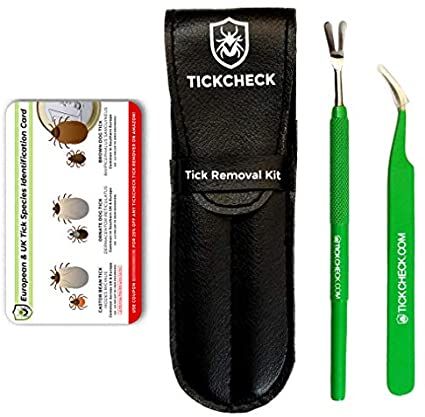How to remove ticks
Tick season in the UK is usually between March and October
As the days are getting longer and the weather warmer, we start to spend more time outside and with this the risk, especially for our furry friends, of picking up unwanted hitchhikers increase.
Whilst tick season in the UK is usually between March and October it may last longer. This is because wet weather and warmer temperatures make ticks more active.

How to remove
Get everything ready before summoning your pet including favourite toy and some treats to help keep them still during the procedure.
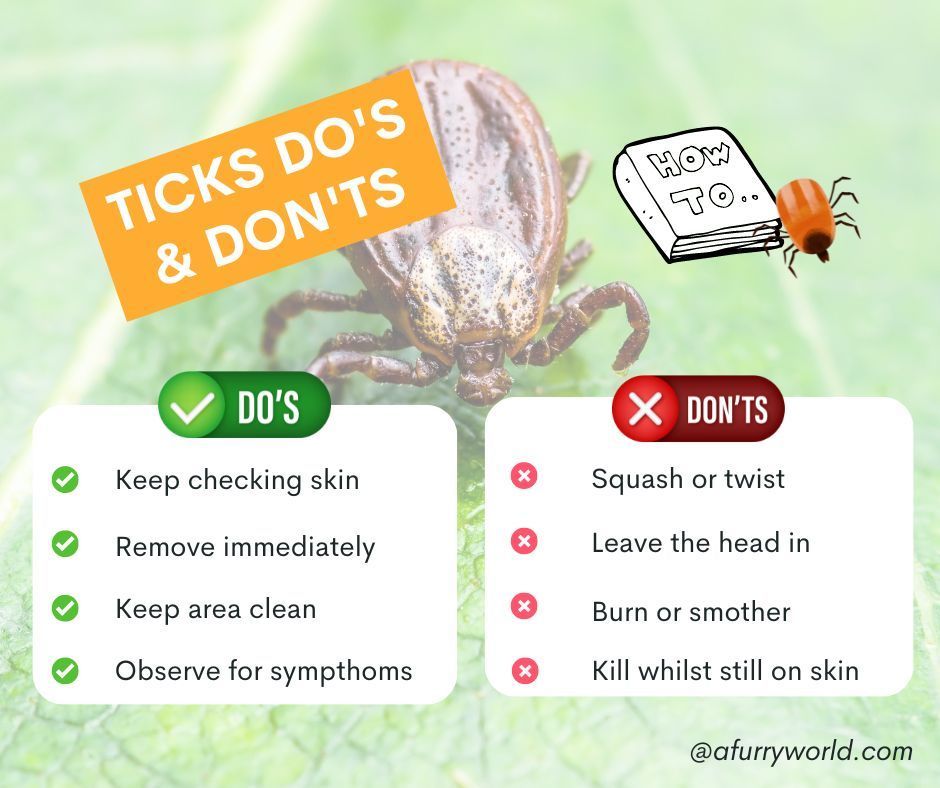
Preparation
· Fine-toothed tweezers
· Cleansing wipe / soap
· antiseptic cream
· Disposable gloves
· Alcohol soaked tissue
execution
· Use tweezers to grasp the tick as close to the skin's surface as possible.
· Pull straight upward with steady, even pressure (don’t jiggle, squeeze or twist)
· Inspect area to ensure that everything has come out including the head.
· After removing the tick, thoroughly clean the bite area.
Once you have removed the tick, place it in the alcohol-soaked paper towel. The alcohol will kill the tick instantly. Once dead, it's safe to dispose of the tick or you can keep in a jar should you need to go to the GP or Vet.
There a lot of helpful tick removal kits out there such as this
TickCheck which can be very useful if you often spend time extracting ticks.
3 Reasons why it is important to remove ticks
1. Disease transmission: Ticks can transmit a variety of diseases to pets, including Lyme disease, Rocky Mountain spotted fever, and ehrlichiosis, among others. These diseases can cause serious health problems for pets and may even be fatal if left untreated.
2. Skin irritation and infection: When a tick bites a pet, it can cause skin irritation and inflammation at the site of the bite. If the tick is not removed, the irritation and inflammation can worsen and lead to secondary bacterial infections.
3. Preventing tick infestations: Removing ticks from your pet can help prevent a full-blown tick infestation in your home or yard. If ticks are allowed to remain on your pet, they may fall off and lay eggs in your home or yard, leading to a larger tick population that is more difficult to control.
LYME DISEASE
Keep Watch
Watch for any signs of infection. While the bite area might appear red for a day or two, it should heal relatively quickly. However, if you notice new signs of infection or additional swelling, it's best to schedule a visit with your veterinarian.
If you have any concerns, call your vet for further instruction.
LYME DISEASE
Lyme disease, also known as Lyme borreliosis, is a bacterial infection that causes a pink or red circular rash to develop around the area of the bite.
Lime is the most common disease transmitted by ticks and whilst being bitten doesn't mean you will definitely be infected it is important to be aware of the risk and speak to a Vet or GP if you or your pet start to feel unwell.
If you or your pet has been bitten by a tick, it is important to remove it as soon as possible to reduce the risk of getting a tick-borne infection, like Lyme disease.
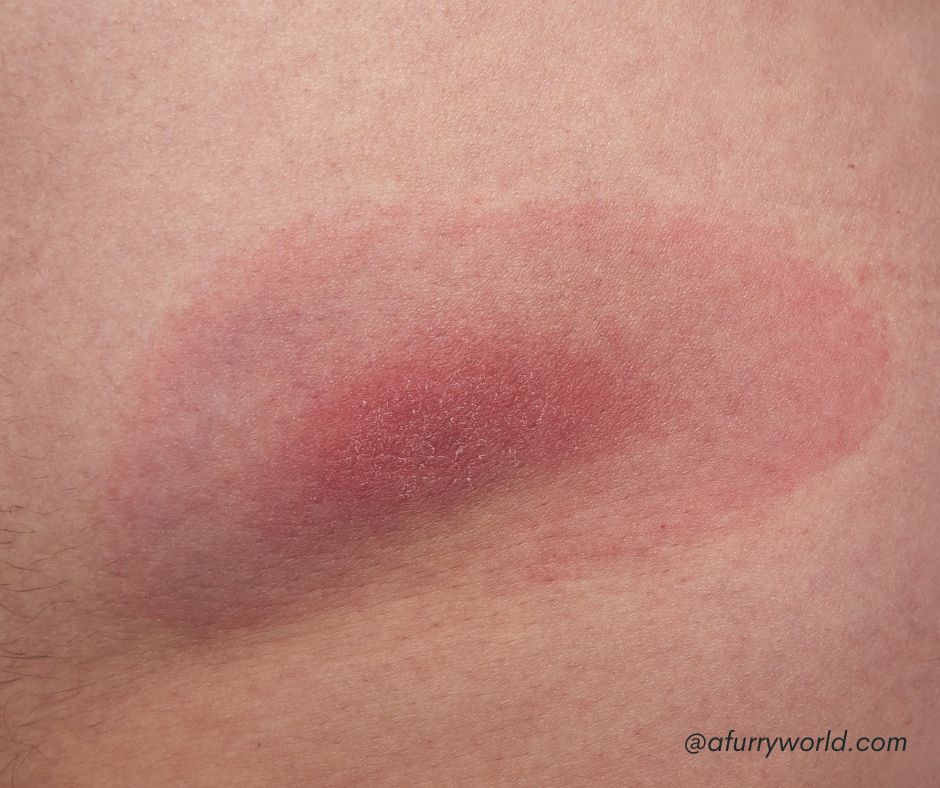
ABOUT TICKS
Ticks are small, spider-like creatures with 6 or 8 legs who feed on blood. They vary in size, usually between 1mm to 1cm long.
Ticks don't fly or jump but climb on to animals or humans as they brush past. It is therefore advised that, when walking to stick to the path. Now that of cause is easy enough for humans but good luck persuading your furry friends 😉
Ticks feed off the blood of a range of mammals and birds, including dear, sheep, squirrels, and garden birds. They are therefore found in areas with these animals, such as:
· grassy areas
· gardens
· woodland
· moorland
risks & SYMPTHOMS
Not every tick carries disease. However, it’s important to remove a tick to stop it from potentially infecting you with a disease, or from causing any infection at the bite site. Removal also ensures that the tick doesn’t go on to breed in your home, causing an infestation.
So why should we try to avoid being bitten and take precaution when we are?
Whilst tick bites aren't usually painful ticks are known for carrying diseases. And whilst not all of them do carry disease a bite can still cause infection including inflammation and some can take 2 to 3 months to develop, and it is therefore important to be aware of symptoms.
· swelling
· itchiness
· blistering
· bruising
With tick season upon us we wanted to look at some of the most commonly asked tick questions pet owners ask in relation to ticks and this is what CB has to say on the subjects.
How do you remove a tick that is embedded?
Ticks can be safely removed with tweezers. Here are the steps to follow:
Use a pair of fine-tipped tweezers to grasp the tick as close to the skin's surface as possible.
1. Pull upward with steady, even pressure. Don't twist or jerk the tick; this can cause the mouth-parts to break off and remain in the skin.
2. If any mouth-parts remain in the skin, use the tweezers to gently remove them.
3. Once the tick is removed, clean the bite area and your hands with rubbing alcohol or soap and water.
4. Dispose of the tick by placing it in alcohol, wrapping it in tape, or flushing it down the toilet.
5. Monitor the bite area for any signs of a rash or infection, and contact a healthcare provider if you develop any symptoms.
It's important to remove ticks as soon as possible to reduce the risk of disease transmission. If you're unsure about how to remove a tick, or if you're experiencing any symptoms after a tick bite, consult a healthcare provider.
After removing the tick, monitor the bite area for any signs of a rash or infection, and contact a healthcare provider if you develop any symptoms. It's also a good idea to save the tick in a container in case you need to have it tested for diseases later on.
Will Vaseline make a tick back out?
There is no scientific evidence to suggest that Vaseline or petroleum jelly can make a tick back out or detach from the skin. In fact, using substances like Vaseline, alcohol, or nail polish to try to suffocate or "drown" the tick can actually increase the risk of disease transmission.
The best way to remove a tick is to use fine-tipped tweezers to grasp the tick as close to the skin's surface as possible and pull upward with steady, even pressure. This method helps ensure that the tick is removed intact, reducing the risk of disease transmission.
After removing the tick, clean the bite area and your hands with rubbing alcohol or soap and water. If you develop any symptoms after a tick bite, such as a rash or fever, contact a healthcare provider. It's also a good idea to save the tick in a container in case you need to have it tested for diseases later on.
What happens if you don't get the head of a tick out?
If you don't get the head of a tick out when you remove the tick, the mouthparts that are left behind can sometimes cause a localized reaction, such as redness, swelling, or a small bump, similar to an insect bite. This is because the tick's mouthparts contain barbs that allow it to remain embedded in the skin while it feeds.
In most cases, this localized reaction will resolve on its own within a few days to a few weeks, and the leftover mouthparts will eventually be pushed out by the body's natural healing processes. However, in rare cases, the mouthparts can become infected, leading to more severe symptoms such as redness, swelling, and pain that can last for several weeks.
It's important to try to remove the tick intact, using fine-tipped tweezers to grasp the tick as close to the skin's surface as possible and pulling upward with steady, even pressure. If the head or mouthparts break off and remain in the skin, you can try using sterilized tweezers or a needle to remove them, or seek medical attention to have them removed.
If you experience any symptoms after a tick bite, such as a rash, fever, or flu-like symptoms, contact a healthcare provider.
Will rubbing alcohol make a tick come out?
Rubbing alcohol is not an effective way to make a tick come out. While alcohol can kill ticks on contact, it does not make them detach from the skin. In fact, using substances like alcohol, petroleum jelly, or a hot match to try to remove a tick can actually increase the risk of disease transmission, as it can cause the tick to regurgitate its stomach contents into the bite wound, increasing the likelihood of infection.
The best way to remove a tick is to use fine-tipped tweezers to grasp the tick as close to the skin's surface as possible and pull upward with steady, even pressure. This method helps ensure that the tick is removed intact, reducing the risk of disease transmission.
After removing the tick, clean the bite area and your hands with rubbing alcohol or soap and water. If you develop any symptoms after a tick bite, such as a rash or fever, contact a healthcare provider. It's also a good idea to save the tick in a container in case you need to have it tested for diseases later on.
Will tick head come out on own?
In most cases, the mouthparts of a tick that are left behind after the body is removed will be pushed out naturally by the body's immune system and healing processes. However, this process can take several days to several weeks, and the remaining mouthparts may cause a localized reaction such as redness, swelling, or a small bump, similar to an insect bite.
It's important to monitor the bite area for any signs of infection, such as increasing redness, warmth, or pain, or the development of a fever. If you notice any of these symptoms, it's important to seek medical attention.
If you're unable to remove the tick's head or mouthparts yourself, or if you develop any symptoms after the tick bite, you should also seek medical attention. A healthcare provider can remove the remaining tick parts and assess whether you need any further treatment or monitoring for potential tick-borne diseases.
How can I stop my dog and cat getting ticks?
Here are some steps you can take to help prevent your dog and cat from getting ticks:
1. Use tick preventatives: There are many effective tick preventatives available for both dogs and cats, including topical treatments, oral medications, and collars. These products work by killing ticks before they can attach to your pet.
2. Check for ticks regularly: Regularly check your pets for ticks, especially after they've been outside in areas where ticks are common. Pay particular attention to your pet's head, ears, neck, and feet.
3. Keep your yard tidy: Keep your yard tidy by regularly mowing the grass and removing any debris, such as fallen leaves or brush, where ticks may hide.
4. Limit outdoor activity during peak tick season: Ticks are most active during the warm months, so consider limiting your pet's outdoor activity during this time.
5. Create a tick-free zone: Consider creating a tick-free zone in your yard by placing wood chips or gravel around the perimeter to create a barrier that ticks are less likely to cross.
6. Consider vaccination: There are vaccines available for some tick-borne diseases, such as Lyme disease, that may be recommended for pets in high-risk areas.
It's important to remember that no tick prevention method is 100% effective, so it's always a good idea to check your pets regularly for ticks, even if they're on a preventative medication. If you find a tick on your pet, use a tick removal tool to remove it as soon as possible to reduce the risk of disease transmission.
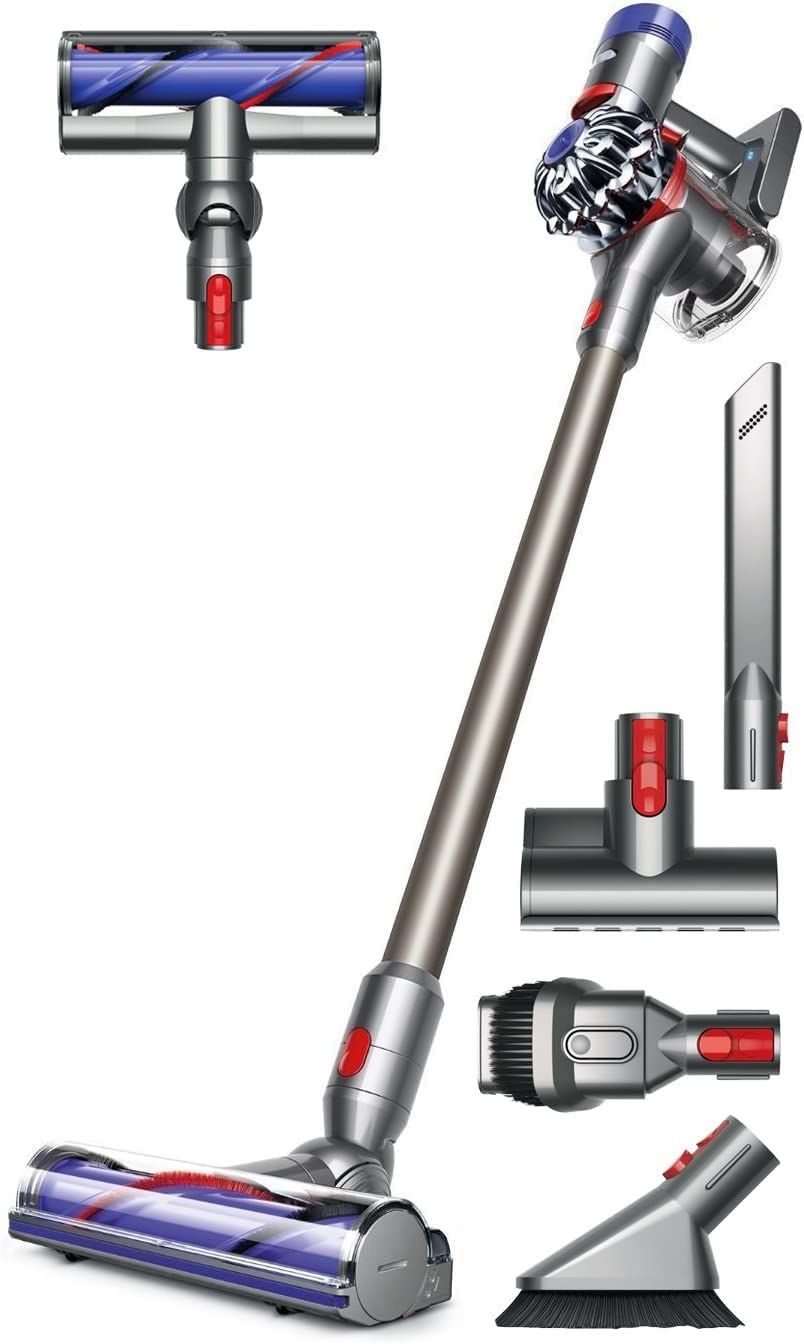
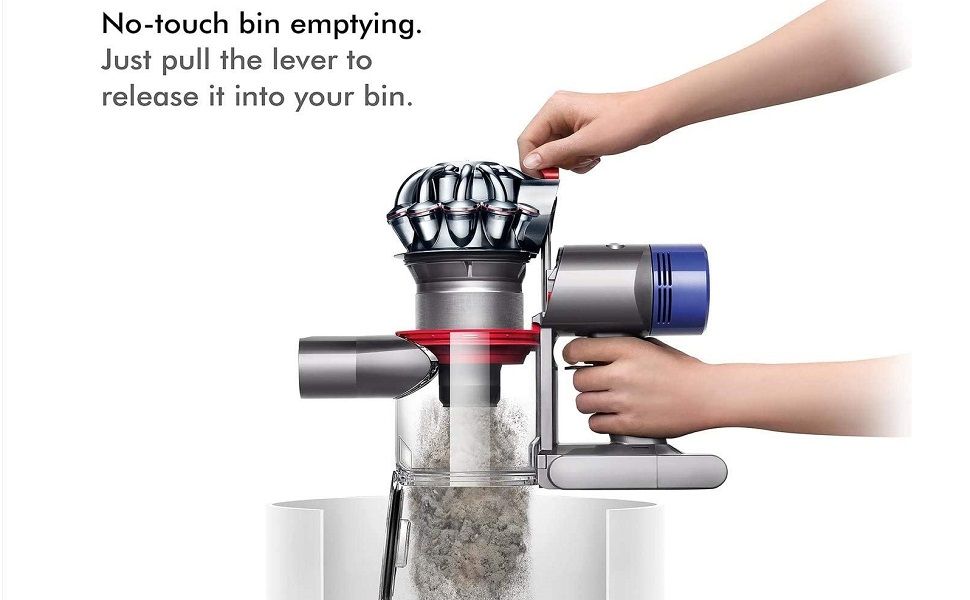
Make sure to clean thoroughly, including a deep hoover to combat infestations.
There are of course many many types and brands of hoovers on the market but many pet owners have found Dyson to be the best vacuum cleaner on the market and this Dyson V8 is a great addition to the home. The Dyson V8 handheld pet animal vacuum cleaner which provides powerful suction for carpets and homes with pets.
This is a cordless hoover and comes with 5 tools and accessories included and has a runtime of up to 40 minutes and.
Along with cleaning and all the other measurements mentioned your vet can also recommend the best “spot-on” tick & flee treatment for your cat as a preventative measure.
THANK YOU
Thank you for reading this post. We hope that you found it helpful and hope to you visit this page again soon. For more information, fun facts and cute photos, please follow us on social media. ❤️
Disclosure & Disclaimer: Some of the links in this blog may be affiliate links, which means we earn a small commission if you click through and make a purchase. This comes at no additional cost to you but helps support the continued production of content. We only recommend products and services we believe will add value to our audience. The content provided is solely for informational purposes. Any advice provided is based on personal experience and research and may not be suitable for everyone. Before implementing any advice, please consult with a professional to ensure it's appropriate for your specific situation. Thank you for your support.

